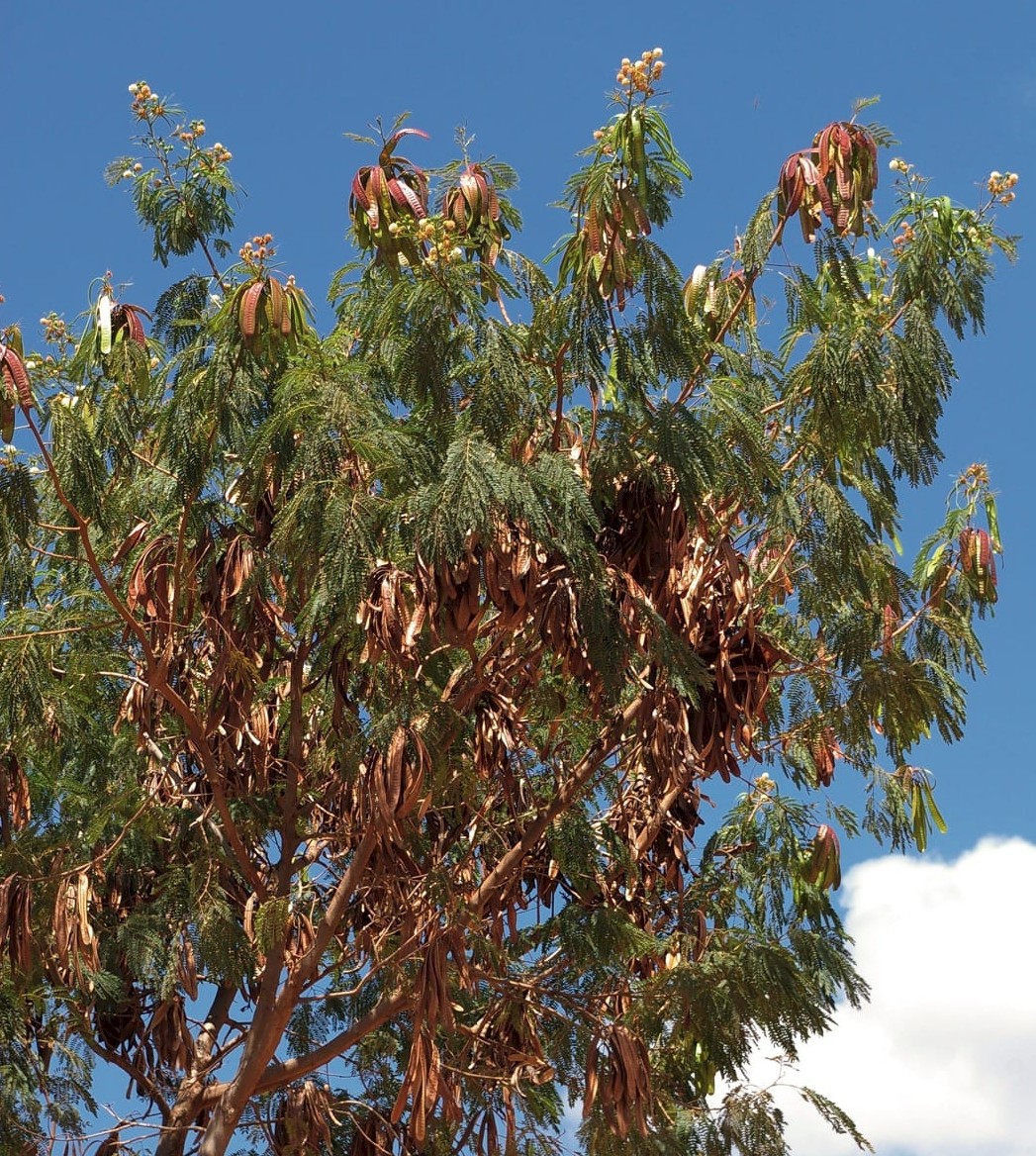Leucaena
Credits
Article from New Trees by John Grimshaw & Ross Bayton
Recommended citation
'Leucaena' from the website Trees and Shrubs Online (treesandshrubsonline.
Family
- Leguminosae (Mimosoideae)
Twenty-two species of Leucaena are recognised, all occurring in the New World, from Texas south to Peru. Among these, L. leucocephala is an important fodder crop, and has become a widespread weed in tropical areas around the world; it is also the only member of the genus to be cultivated in temperate gardens. Leucaena species are evergreen, unarmed trees or shrubs that branch at ground level or form a short bole of 3–5 m. Young stems are terete or, rarely, angled and the bark is greyish brown with rusty fissures. Stipules are ovate, subulate or long and pointed, and have small, asymmetrical basal wings; they are persistent or deciduous. The leaves are bipinnate and paripinnate and the rachis has a single-stalked (rarely double) nectary; nectaries are also present at the base of the terminal (and some subterminal) pairs of pinnae. The pinnae occur as two to many pairs, with few to numerous pinnules; the pinnules are opposite, sessile or short-petiolate, oblong to elliptic and with acute or rounded apices; venation is obscure. The inflorescences are capitate and in axillary fascicles of one to many; the peduncle has a whorl of fused bracts. The flowers are mainly hermaphrodite, though a few staminate flowers may occur at the base of the inflorescence; they are 5-merous and subtended by persistent, peltate bracts; the sepals and petals are rather insignificant, but the stamens are prominent, white or cream (rarely yellow or red); one distinctive feature of Leucaena is the anthers, which are hairy. The fruit is a pendent, dehiscent legume with a small apical beak (Allen & Allen 1981, Hughes 1998).

